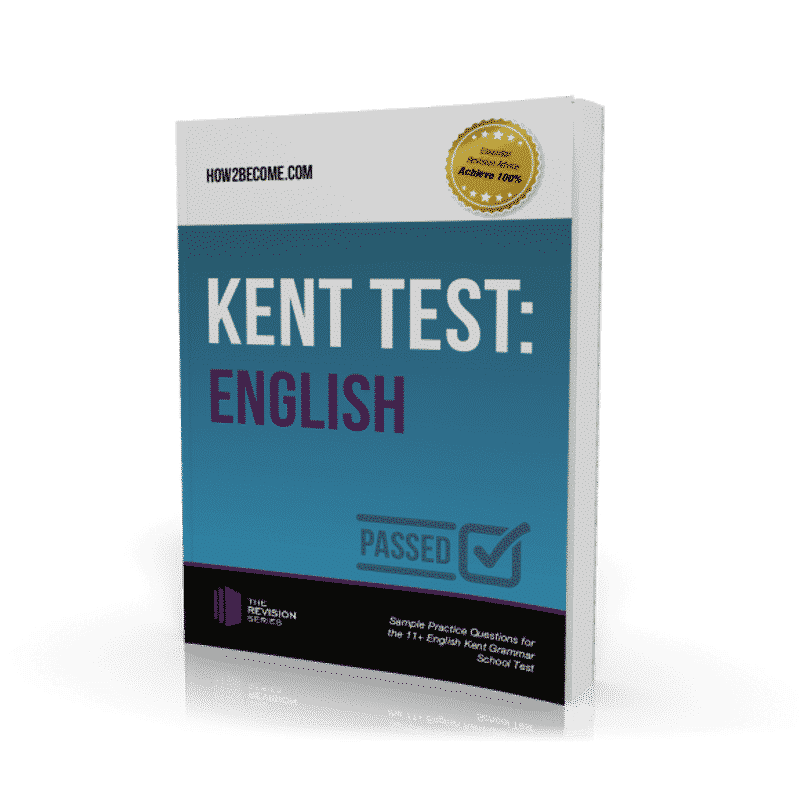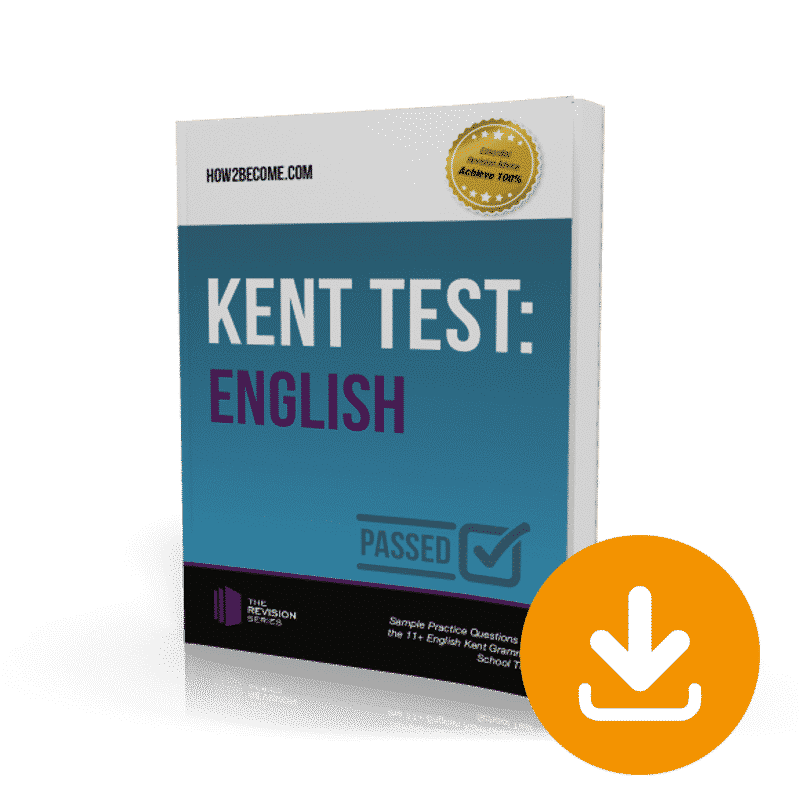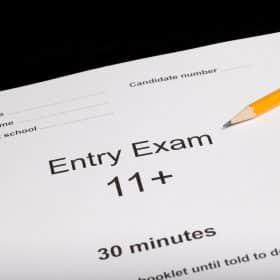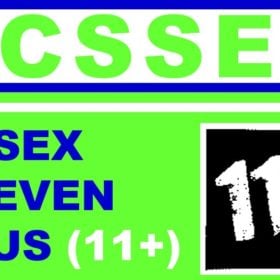HOW TO PASS THE 11 + KENT TEST: ENGLISH
If you and your child are considering a grammar school placement in Kent, your child will need to pass the Kent grammar school 11 + assessment..
This assessment will test all of the vital skills and knowledge required for a grammar school student.
Although passing the test does not automatically guarantee your child a placement in a Kent grammar school, your child will be one step closer to securing their placement.
Acceptance into grammar schools will all depend on a child’s scores. With the use of our download guide, we will be able to help your child improve their test scores in the English part of the 11+ assessment.
UNDERSTANDING THE 11+ KENT GRAMMAR SCHOOL ASSESSMENT
Before we provide you with some sample 11+ test questions, you need to understand what the test is, who is expected to take it, and how to improve your chances of securing a grammar school placement.
At the end of year 6, students will be entering the secondary school phase. Each student will need to apply for a state school, whether that being:
- A Community School;
- A Foundation School;
- An Academy;
- A Grammar School.
If your child wishes to apply to a grammar school in Kent, they will be expected to sit the Kent Test. This test will assess whether or not that student is ‘suitable’ for a placement in a grammar school.
As the name suggests, this form of the 11+ is only applicable to grammar schools located in Kent. Grammar schools outside of Kent would not require students to undertake this assessment, and may have assessments or criteria of their own.
In order for your child to pass this exam, they must meet the following requirements:
- A score of 320 or more is needed to be considered for a grammar school placement;
- For each part of the test, English, Maths, Verbal and Non-Verbal Reasoning, a student must score 106 or more in each part if they wish to be considered for a grammar school placement.
As mentioned, the test will assess particular skills and knowledge required to obtain a Kent grammar school placement.
During the test, your child will undergo two different papers. The first paper will consist of English and Maths, and they will have 1 hour to complete the paper.
The second paper will be a Reasoning assessment, and will assess your child’s understanding on Verbal and Non-Verbal Reasoning. They will have 1 hour to complete the paper.
A written exercise is also given, but is not marked. Instead, this may be used by a panel of head teachers to analyse test scores.
USING OUR HOW2BECOME KENT TEST: ENGLISH GUIDE
The best way to prepare for the test is to undergo as many practice questions you can beforehand.
Our How2Become guide has been carefully designed to demonstrate some of the KEY skills your child will need to know in order to score highly in their 11+ assessment.
This ENGLISH revision guide will aid anyone during the English part of their assessment. The guide provides useful information, top tips and sample questions for your child to work through and improve their understanding in regards to literary ability.
THE ULTIMATE REVISION GUIDE FOR THE ENGLISH PART OF THE 11+ ASSESSMENT
Here at How2Become, we have made it our aim to create a guide that is simple and easy to use. Your child needs to make the most out of their revision tools, and that is why we have broken down the English part of the assessment into small sections. That way, your child can work through one section at a time, at a pace that suits them.
WITHIN THIS GUIDE, YOU WILL FIND:
- An Introduction to your guide;
- General tips for the English part of the assessment;
- Literary techniques and definitions;
- Practice questions and detailed answers.
PRACTICE SAMPLE QUESTIONS – ENGLISH ASSESSMENT
Determine whether the following sentences are written in past, present or future tenses.
I ran to the park. _______________
I am running. _______________
I am going to run to the park. _______________
Susie had gone for a shower. _______________
Complete these words by adding the suffixes ite or ight.
Appet____ Compos_____ Overs_____ Handwr_______
Del____ Exquis_____ Twil_____ We_____
Underline the correct homophones for the following sentences.
After school, she wanted to (prey, pray) at her local church.
It was all (two, to, too) much for her.
On their wild adventures, they ran into a (bear, bare).
Which sentence has the correct punctuation?
A – My dog barks all, the time.
B – My mums dad is named steve.
C – “That was unacceptable behaviour” said Kim’s teacher.
D – it’s there fault.
Choose a word that relates to both sets of words in the brackets.
(rest, interval) (damage, smash)
| A | B | C | D |
| Drop | Wait | Blow | Break |
Read the following passage, and answer the following questions
It’s been 11 months and 14 days since my carefully constructed world came crashing down into a thousand little pieces. My life was torn to merciless shreds, just like the car that my mother and I were in.
Little did I know how one moment can change your life forever. I thought I had so much time to make memories with the one person that I relied upon most. I have been forlorn and melancholy for almost a year now, and I am struggling to grasp the concept of ‘it gets easier with time’. That to me seems unimaginable.
I remember the sharp sounds of the brakes. I remember the moment our car collided with a patch of glistening ice that covered the country roads. I try to recall the impact, but my mind goes blank. It is like a hole in my memory. My life is in 1000 jigsaw pieces, which I cannot piece back together.
a) Which of the following reasons best describes why the passage is written in first person?
A – The reader wants to put their views across.
B – It’s an account of the author’s experience.
C – It is an account of events, creating an emotional relationship with its readers.
D – Provide a sense of belonging and reassurance.
b) “My life was torn to merciless shreds, just like the car that my mother and I were in” (line 2/3). What literary technique is used in this sentence?
A – Metaphor
B – Paradox
C – Juxtaposition
D – Simile
ANSWERS to PRACTICE SAMPLE QUESTIONS – ENGLISH ASSESSMENT
Q1. Past, present, future, past
EXPLANATION = I ran to the shop – this is past tense because it has already happened.
I am running – this is present tense because it is happening now.
I am going to run to the shop – this is future tense because it is going to happen later, so therefore it’s not happening now, and it hasn’t happened yet.
Susie had gone for a shower – this is past tense because it has already happened.
Q2. Appetite, composite, oversight, handwrite, delight, exquisite, twilight, weight.
Q3. (pray), (too), (bear)
EXPLANATION = after school, she wanted to pray at her local church.
It was all too much for her.
On their wild adventures, they ran into a bear.
Q4. C = “That was unacceptable behaviour” said Kim’s teacher.
EXPLANATION = the first part of the sentence is being said, so therefore it needs speech marks. The first letter of the first word needs be capitalised. The fact that it is Kim’s teacher, means that there needs to be an apostrophe in the word ‘Kim’s’. A full stop is needed to complete the sentence.
Q5. D = break
EXPLANATION = break can mean ‘taking a break’ i.e. a rest or interval. It can also mean to ‘break something’ i.e. to ‘damage’ or ‘smash’ something.
Q6. a) C = It is an account of events, creating an emotional directness with its readers.
EXPLANATION = first person narration is often used to create an emotional response with its readers, which draws them into a specific voice or personal situation.
Q6. b) D = simile
EXPLANATION = “my life torn to merciless shreds, just like the car that my mother and I were in” is a simile. The use of the word ‘like’ demonstrates that it is a simile, because it compares the similarities of two very different things.
FREE BONUS
When you order you will receive the following free bonus;

Plus 30-days FREE ACCESS to the 11 + online testing suite. Thereafter, just £5.95 per month. No minimum term. You may cancel anytime. Cancel before the 30-days are up and you will not be charged. Online suite access on PC, MAC and mobile devices
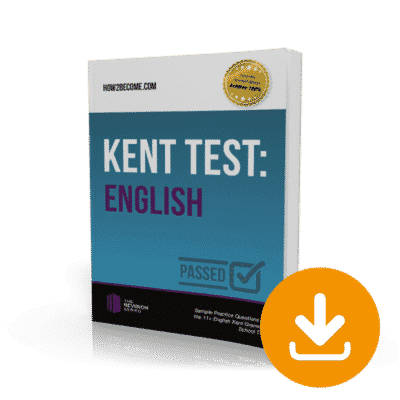
✓ 30-Day Money-back Guarantee
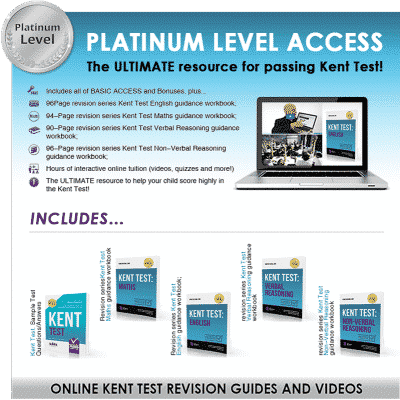
✓ 30-Day Money-back Guarantee
Did you know? All orders with How2Become are protected by our 30-day money-back guarantee. What ever the reason…or no reason at all…you can have your money back if this resource isn’t right for you (see our terms for full details).
